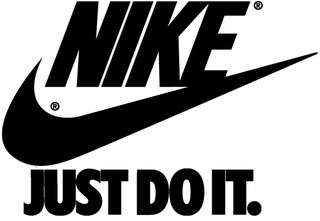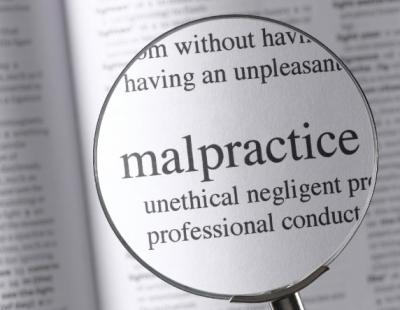 Oh, the wonder of beautifully crafted taglines. Those few strategically selected words that sum up everything your business stands for and what you want your target audience to know about you. They’ve made companies fortunes by telling people what makes them stand out in the sea of sameness. Consider FedEx’s brilliant “When it absolutely, positively has to be there overnight.” Nine simple words that tell FedEx buyers precisely what they’re going to get, while simultaneously informing all of its employees what their mission is. What if FedEx’s slogan was “We ship things!”? Would Nike be as successful if it allowed an executive committee to red-pencil “Just do it” into “When you need great shoes?” How would BMW’s vision change if “The Ultimate Driving Machine” became “Our cars are fun to drive!” My point is that these companies didn’t settle for weak platitudes or vague, generalized statements that could have applied to their competitors. Nope, they decided that they weren’t going to settle. Instead standing out and differentiating themselves was business-critical. Can the same be said for your company and its marketing? Do you have a themeline or slogan that makes you stand out? Is it unique and memorable? Or is it mediocre because somewhere down the line, people settled?
Oh, the wonder of beautifully crafted taglines. Those few strategically selected words that sum up everything your business stands for and what you want your target audience to know about you. They’ve made companies fortunes by telling people what makes them stand out in the sea of sameness. Consider FedEx’s brilliant “When it absolutely, positively has to be there overnight.” Nine simple words that tell FedEx buyers precisely what they’re going to get, while simultaneously informing all of its employees what their mission is. What if FedEx’s slogan was “We ship things!”? Would Nike be as successful if it allowed an executive committee to red-pencil “Just do it” into “When you need great shoes?” How would BMW’s vision change if “The Ultimate Driving Machine” became “Our cars are fun to drive!” My point is that these companies didn’t settle for weak platitudes or vague, generalized statements that could have applied to their competitors. Nope, they decided that they weren’t going to settle. Instead standing out and differentiating themselves was business-critical. Can the same be said for your company and its marketing? Do you have a themeline or slogan that makes you stand out? Is it unique and memorable? Or is it mediocre because somewhere down the line, people settled?
Imagine you owned a small piece of your buyers’ brains. And every time they thought about making a purchase where your product or service could be considered as an option, the brand or company name came to mind. For example if they were thirsty, they thought, “This Buds for you, “ or if they wanted a burger they thought, “Have it your way!” or if they when were tired and looking for a lodging for the night they remembered “We’ll leave the light on for ya!” That’s what the marketing slogans from Budweiser, Burger King and Motel 6 do, they help people remember a product and increase their propensity to buy. And that’s what a good marketing slogan can do for you. Unlike your company tagline or marketing message, your marketing slogan may change regularly or you may have more than one. For example American Express has: “Membership has its privileges.” And “ Don’t leave home without it.”
The taglines that work the hardest are not puns or rhymes, but ones that present many layers of meaning, where one layer can speak to the product while another speaks to value or even a brand a brand belief. It can manifest itself in any number of ways…online or offline. In ads and as a social media hashtag. On promotional products and product packaging. Most everywhere.
So what does a good tagline do? At its best, a good tagline conveys a singular value, loud and clear, on what a brand stands for. Remember, powerful words are powerful things. It also connects across all generations, geographies and markets, and becomes relevant for the consumer in his or her own personal way. And the right tagline doesn’t work for competitors because it’s only unique to your brand/company. Unfortunately, far, far, far too many taglines are generic and meaningless. In this time of technology disruption and increasing competition, clear positioning is valuable. Problems occur when the company and its messaging doesn’t have a focus, or the tagline could apply just as easily to other companies. In the marketplace, taglines are used to quickly communicate company differentiation. That said, taglines aren’t developed for customers alone. They’re also important for internal audiences as they can align an organization around a common cause and vision.
With that in mind, there are plenty of taglines out there that don’t work because they fail to connect. They’re easily overlooked, dismissed as “every day,” they lack originality or even mistaken for another brand. This usually happens when one of these mistakes happens:
Alternatively, good taglines have a number of hard-working qualities to them. They’re:
The process of developing a fresh, original and imaginative tagline is no easy task. From competitive research and brainstorming to paring down the list of options to more brainstorming, the process can take more time than you think …not to mention the back-and-forth given the stakeholders who are involved. And even then, the tagline may not be “all that.” That said, here’s how powerful a tagline can be – after 50+ years! Avis Rent-A-Car built its business with “We Try Harder” (which they finally put out to pasture just a few years ago). How the phrase came to be sounds like something out of Mad Men. The tagline was created in 1962 and actually came about in the response that Bill Bernbach, the co-founder of DDB, received from company management when asking why anyone ever rents a car from them. “We try harder” was the answer. Within a year, Avis turned a profit for the first time in over a decade and the rest is history.
####
Rolf Gutknecht is vice president, director of account services for LA ads. To discuss your thoughts with Rolf on this blog or any marketing matters, email via this link, or visit www.LAadsMarketing.com. You can also connect with Rolf on LinkedIn.
 The life of a hummingbird rarely exceeds four years. The life expectancy of a Marketing Director (or CMO or VP of Sales & Marketing) at any given company is even less than that. The typical tenure these days is a little more than 3 years and this is up from about 26 months in 2004. In fact, as you stroll through the offices at many companies, it’s an easy bet which executive is a dead man (or woman) walking: the Marketing Director.
The life of a hummingbird rarely exceeds four years. The life expectancy of a Marketing Director (or CMO or VP of Sales & Marketing) at any given company is even less than that. The typical tenure these days is a little more than 3 years and this is up from about 26 months in 2004. In fact, as you stroll through the offices at many companies, it’s an easy bet which executive is a dead man (or woman) walking: the Marketing Director.
What are some of the reasons causing such a short tenure? What are some things a Marketing Director can do to be successful? How much of that is on the company and how much is brought on by the individual?
Ok, so how much of this is do you see or experience in the world that you live in? If you’re like the vast majority of Marketing Directors in this country, you see any of these issues popping up on a fairly regular basis. Here are a few things to consider in order to make sure you’re not having to call your executive recruiter anytime soon.
While the marketing landscape changes so quickly, the good news is that a Marketing Director can succeed in the face of headwinds no matter which way he/she faces. It may be more challenging than it should be, but stand true to your brand, be current and always in the know, and be bold enough to make a difference….otherwise, chances are, you might be dusting off that resume.
####
Rolf Gutknecht is vice president, director of account services for LA ads. To discuss your thoughts with Rolf on this blog or any marketing matters, email via this link, or visit www.LAadsMarketing.com. You can also connect with Rolf on LinkedIn.
 Most every time I listen to a radio spot in my car, see a TV spot on cable or fan through the pages of a magazine (trade or consumer), I find myself wincing. Ad after ad tells the same sad story: money spent leading to no results. In fact, I’d venture to say that better than 85% – 90% of the ads lay the same leaden egg. Oh, the humanity!
Most every time I listen to a radio spot in my car, see a TV spot on cable or fan through the pages of a magazine (trade or consumer), I find myself wincing. Ad after ad tells the same sad story: money spent leading to no results. In fact, I’d venture to say that better than 85% – 90% of the ads lay the same leaden egg. Oh, the humanity!
If you’re questioning whether your advertising is doing what you paid it to do, odds are it’s not. And although there are master classes you might take in advertising creativity, marketing strategy and media planning, it’s very likely the problem falls within four main areas. Checking off each point, you can estimate your ad’s effectiveness even before you place it. I mean it.
Here then are the four fundamental concepts that can make a meaningful difference in how successful your next advertising effort is.
1) Have a something compelling to say. And by that, I mean not just compelling to you and your staff, but to a completely disinterested audience. If you’ve followed my posts for any length of time, you know that I frequently observe that people don’t like advertising, and completely ignore the boring or hard-to-figure-out kind. So whatever you have to say must go the distance to alter their indifference. Don’t just tell your audience you’re “a leader in the industry” or that you’ve been around for three generations. They’ve heard that so many times before from you and your competitors that it means nothing to them. Instead tell them something they don’t know, something that might even surprise them. You can tell when someone’s ad is truly compelling when you think, “Gee, I didn’t know that!” We sometimes call that a “sticky” message, one that has staying power after the reader has turned the page or flipped the channel.
2) Sell, don’t just tell. One of the most egregious mistakes advertisers make is simply laying out all the features of their product or service and expect the audience to figure out why that’s important to them. Often that’s done in the form of five or seven bullet points, such as:
or in Business-to-Business ads (snatched from the pages of a recent trade pub):
Yikes! There’s no emotion in that. There’s no selling. There’s no story or connection. Instead of praying that maybe one or two bullets might hit home with some member of the audience – or worse, trying to be all things to all people – why not focus on one point at a time and spell out why that point really matters. People don’t buy bullets. They don’t buy features. But they do buy benefits and ideas that add value to their lives. Always be thinking, from their point of view, “what’s in it for me?”
3) Be your own brand and not a clone of others. All too often, within any given industry, I see ads in which the logos and contact information are interchangeable, one company’s with another’s. None stand out, all look alike, and thus all the players are perceived as a commodity. Here’s a question for you: If your logo was blocked out of your ad or commercial, would the audience still know it’s yours? Take, for instance, Jack-In-The-Box. Their commercials are radically different from McDonalds’. BMW’s ads are unmistakably theirs and not Mercedes’. It’s a matter of message but also a matter of style, personality and consistency. The more striking and distinctive your ads are, the stronger competitive impact they’ll make, while your competitions’ ads could be just anybody’s. Dare to be Different!
4) Tell the same story across all your platforms. With all the buzz about Social Media, it strikes me as odd that most business Facebook pages and outbound Tweets have little in common with their owners’ main marketing messages. In part that’s because the marketing messages themselves aren’t that well-defined. But it’s also because the marketers don’t appreciate the importance of speaking with the same voice at any touchpoint. Good marketing is a collective enterprise and an erosive processes. For instance, if your main story is about how your company has been around for over 100 years, use your Facebook pages to talk about the early days of your firm, the companies you’ve served, etc. Make sure your phone hold-message tells the same story. Make sure you hold special events or promotions that support the theme. If you don’t keep hammering away at the same selling proposition at every touchpoint, then each effort conflicts with every other.
While hardly a full compendium of marketing knowledge, if you make the effort to assure your advertising and marketing is consistent with these four points, you’ll be far out in front of 85% of your competition. And that’s the goal, to create ads your customers will react to and that your competition will hate.
####
Rolf Gutknecht is vice president, director of account services for LA ads. To discuss your thoughts with Rolf on this blog or any marketing matters, email via this link, or visit www.LAadsMarketing.com. You can also connect with Rolf on LinkedIn.
 Over the years, whether within an advertising/marketing agency or in the corporate environment, I’ve worked with people who have a distorted view of what marketing can do. Mostly these people think that all it takes is slapping together a few concepts to create an ad coupled with little bit of social media and some PR for good measure and the marketing is complete. The thought being that sales will be pouring in the door and big bonuses are just around the corner. After all, most anyone can do this “marketing stuff,“ right?
Over the years, whether within an advertising/marketing agency or in the corporate environment, I’ve worked with people who have a distorted view of what marketing can do. Mostly these people think that all it takes is slapping together a few concepts to create an ad coupled with little bit of social media and some PR for good measure and the marketing is complete. The thought being that sales will be pouring in the door and big bonuses are just around the corner. After all, most anyone can do this “marketing stuff,“ right?
Alternatively, when a company is not realizing their business or sales goals, we as marketers hear things like: “We’re just not getting the sales that we should because our marketing just isn’t working.” Or “It’s Marketing’s fault that sales are down!” while, in fact, there are other business issues that are at the root cause. There’s no question a solid marketing program can increase your business, but realistically, it can’t fix everything (although ineffective marketing activities might very well make matters worse). Below are 5 things marketing can’t do for you:
Marketing cannot overcome leads that are not being followed up. I did some consulting at company and upon seeing a couple of boxes marked “Tradeshow forms,” I asked them what that meant. They told me it was customer inquiry cards that they had received during the past 3 months of tradeshows they had attended. These customer inquiries had yet to be entered into the system which meant these prospects hadn’t yet been contacted. Which meant potential sales were not happening. And yet, this company had hired me to help them find ways to generate more sales from …wait for it… new prospects. When opportunities like the aforementioned happen, you’ve got to act on them and quickly. If you were interested or wanting to hear from a company regarding a product or service they offered, especially after having given them your contact info, how soon would you expect to hear from them? Yeah, that’s what I thought.
Marketing can’t make people buy things they either don’t want or can’t afford. It doesn’t matter how great your product or service is, if you’re selling to people who either don’t have the interest or the means to buy it, then your marketing is going to fail no matter how brilliant it may be. Yes, marketing can create messaging that ignores the problems with a product or service but with 24/7 access to information and customer comments on the web, problems or issues get exposed quickly. Bottom line: is your product or service delivering on the promises you’ve made? Have you provided the value that the customer is looking for? Basically it all boils down to this: before you decide you need more marketing, take a few moments and make sure the marketing you’re doing is really the right solution for your business.
Marketing can’t be done without a realistic budget. The fact is, if your company is spending a good deal less than the competition, you’re probably not making any significant gains in market share. Yes, there might be a competitor that’s overspending, but my experience working with companies from the Fortune 100 to small mom-and-pops is that you don’t pose a serious competitive threat unless your marketing budget is in the same ballpark with your competition….it’s just one of those “marketing truths.” Developing and then executing the marketing activities takes skill, experience and money and it doesn’t come cheap from anyone who knows what they’re doing. You get what you pay for.
Marketing can’t fix bad service or a bad customer experience. Again, in your own personal life, how often do you keep doing business with a company who doesn’t really value you as a customer as evidenced by their poor customer service? While marketing activities can bring prospects to the door, it can’t ensure that they’ll have an experience that they’ll want to repeat. Unfortunately, despite all this talk or lip service within organizations about being customer centric and “engaging” with their buyers, far too many companies see customer service as something other than what it is…a marketing opportunity that allows the customer to feel valued and appreciated. At the end of the day, when customers continue to have a lousy experience with your products or services or with your customer service reps or sales people, you and I know that’s a bad, bad place to be. Not only have you lost a customer for good, but they’ll probably go and tell others, which means you have to potential to lose future prospects as well.
Marketing can’t make you successful by tomorrow morning. Just because you start a marketing program doesn’t mean you’re immediately going to see your business explode. Marketing is about getting your name in front of your target market on a regular basis until they finally decide to give you a try. Investment in marketing communication for some brands should therefore be seen for what it is: reinforcing/strengthening favorable brand perceptions and insuring your brand’s strength and status for the future. Just as one or two workouts at the gym won’t immediately make you more muscular or leaner, you know that it’s improving your health for the long-term. Think of marketing in the same way…it takes time. That said, if pressed for new sales or new business clients right now, launching into a new marketing program may not be enough to get you where you want to be and you may want to start looking at other options.
And, we haven’t even addressed other issues such as the company not closing leads or not invoicing or collecting on unpaid accounts or it has too many expenses, etc., all issues that marketing can’t solve. At the end of the day, while it’s easy to immediately blame marketing for lack of business, we need to remind people that marketing is intertwined with many other aspects of the organization aimed at getting and keeping customers. Yes, it’s important to judge and course-correct marketing activities if business is lagging, but we need to look at the whole organizational picture to understand why business is slipping off. Otherwise, Marketing will continue to have the finger pointed at them.
####
Rolf Gutknecht is vice president, director of account services for LA ads. To discuss your thoughts with Rolf on this blog or any marketing matters, email via this link, or visit www.LAadsMarketing.com. You can also connect with Rolf on LinkedIn.
 As a marketing firm that’s always looking to engage in new business relationships with interesting companies, we continue to have more than our share of new business meetings. These companies run the gamut from small to “you’ve heard of this company before” and while they’re sometimes far removed from one another in terms of sales and recognition, a surprising number of times there’s not that much of a difference in their approach to their marketing initiatives which, as my business partner puts it, “borders on marketing malpractice.”
As a marketing firm that’s always looking to engage in new business relationships with interesting companies, we continue to have more than our share of new business meetings. These companies run the gamut from small to “you’ve heard of this company before” and while they’re sometimes far removed from one another in terms of sales and recognition, a surprising number of times there’s not that much of a difference in their approach to their marketing initiatives which, as my business partner puts it, “borders on marketing malpractice.”
How am I defining “marketing malpractice?” Well, while it might take form in a few different ways, it’s primarily about a breach of duty that does harm when another course of action, as performed by a reasonable person, should have been taken. In short, it’s about negligence. While malpractice is commonly associated with the medical, financial and legal world, it could also be readily applied to the marketing world as well.
With that in mind, let’s look at 5 ways that companies and marketing leaders could become guilty of marketing malpractice:
Not having a full grasp of the marketplace
Too many companies assume that there is absolutely no need to substantiate their beliefs about the marketplace, about what their prospects want, about why their customers are buying, about what people think of their brand, about most anything having to do with those whom they want to purchase their products or services. Generally the thinking is that no one can know the marketplace as well as the company and the market will accept whatever you offer. Are you pretty darn confident on how your specific industry is changing and what is needed to get out in front of the competition? Understanding the marketplace as a whole will create the opportunities that bring with it the sales, visibility, prominence, trust, etc., that you might be looking for. And you get there by doing some research…the right way.
A lack of focus
The “We have to be here, there and everywhere” thinking is a sure way to squander the limited budget that you have. And who said that you need to be all over social media platforms like LinkedIn, YouTube, Facebook, Twitter, Google+, and Pinterest? Heck, you’ve got your product literature online, and your Web site has a blog and videos. Not to mention all the offline activities ranging from tradeshow activities to advertising to PR, etc. Why did you believe you need to be in ALL of these media locations in the first place, and, just as importantly, who is making sure that all of these activities work together?
Inconsistency or mixing of marketing messaging
When different aspects of your marketing messages don’t reinforce each other, the inconsistencies alienate prospects and current customers. Inconsistent marketing distorts clear expectations, makes potential customers unsure of the characteristics of your products and creates unhappy customers who don’t get what they expect. These inconsistencies affect businesses by reducing both initial sales to consumers as well as repeat sales from dissatisfied customers. Throwing stuff up against the wall to see what sticks is a clear path to wasting resources and confusing people/organizations that you want as customers.
Being just like the other guy
How many times have you read or seen something from one company that looked just like what one of their competitors has or is currently saying? For an example, go online and look at professional services firms and tell me why one is different from the other. The fact is that there is no relevancy to what you’re saying if you just keep repeating what others have said already. Your company/products/services only has value if you’re different and if you can find a way that you can take who you are, what you make, and what you offer and create a relationship with prospects and current customers that is instantly captivating. Striving for differentiation rather than being a “me-too” allows for the organization to seize on new sales-producing and revenue-generating opportunities. Otherwise, you’re just a lazy copycat…two words that don’t leave the minds of the customers and competitors anytime soon.
Confusing strategy with tactics
Maybe, just maybe, the most common marketing malpractice occurrence is not having one over-arching marketing strategy – and ensuring its implementation through all your tactics. Executing marketing tactics without having a well-developed integrated strategy is a recipe for disaster. It’s easy to start with the “how” but if you haven’t identified the “what,” you may find yourself spending a lot of time executing tactics that don’t take you where you want to go and in so doing, you’ll be wasting time, resources and losing out on sales-producing opportunities. What is needed is one single integrated strategy that looks across all delivery platforms whether online or offline, print, broadcast, or mobile. Your customers don’t have an online self and offline self and neither should you. Think holistically about all your marketing initiatives.
At the end of the day, both the short-term and quite possibly the long-term prospects of the company could be affected as a result of marketing malpractice. Whether done because one doesn’t know better or because of expediency, it happens and the organization will have to live with the results. So, while you won’t be brought into court (unless you did something very egregious), one question that a marketer has to ask oneself and answer honestly, is: “Have I breached my duty as the marketing leader for the organization so much so that it has caused harm to both short and long term sales, visibility, prominence, market share, and trust for the company?” Hopefully, the answer today and in the future will remain a resounding NO.
####
Rolf Gutknecht is vice president, director of account services for LA ads. To discuss your thoughts with Rolf on this blog or any marketing matters, email via this link, or visit www.LAadsMarketing.com. You can also connect with Rolf on LinkedIn.
 Over this past weekend, I went into a store that’s part of a 15-20 location chain, and upon entering, this place made sure that I understood that for them “It’s all About Exceeding Expectations!” Now as a line, it’s pretty pedestrian but it set the tone for what I was going to experience. And they were true to their word. But you see, it wasn’t just 5 words strung together. Instead this was, after speaking with the staff, their rallying cry for the first quarter of the year.
Over this past weekend, I went into a store that’s part of a 15-20 location chain, and upon entering, this place made sure that I understood that for them “It’s all About Exceeding Expectations!” Now as a line, it’s pretty pedestrian but it set the tone for what I was going to experience. And they were true to their word. But you see, it wasn’t just 5 words strung together. Instead this was, after speaking with the staff, their rallying cry for the first quarter of the year.
That got me thinking that not enough companies use rallying cries (or sometimes referred to as “battle cries”). After all, these rallying cries have been used for thousands of years to unite individuals into a collective identity and to emotionally charge them up before rushing forward to accomplish their mission. So let me ask, has your company instituted a rallying cry? And I don’t mean for a second a “mission statement,” which most companies have; because of group think, these mission statements lack originality, they’re as uninspiring as possible, and which 99.99% of employees couldn’t recite it to win a million dollars. Instead, what I mean is a short and catchy phrase that can inspire a company and fascinate your marketplace. A rallying cry will tell employees how to act and consumers what to expect.
When you institute a rallying cry, everyone knows what it means. Rallying cries are huge. They’re single themes that everyone connects to and rallies around. That theme ends up creating this “mini-vision” for individuals to focus on… a clear direction for the entire organization for a specified period of time which speaks to “this is what’s important to our organization right now!” And so this doesn’t come across as a theme line or slogan but rather an understandable call-to-action to employees and customers, one needs to define what the goals to be met will be. It can be your big goal for the year or your most important annual metric. Regardless, the rallying cry should be specific and measurable. This could take the form of something like “3x in 2y” (Tripling business in 2 years) or “500 in 2015” (500 new accounts in 2015) or “Quick Start 50” (making contact and setting presentation appointments with your Top 50 dream clients). You get the idea.
For some clients I’ve worked with, this rallying cry provides a reason for the organization to start working as a team rather than in siloed departments. There’s a tremendous power in this kind of focus as it helps the company achieve better results faster and gets them ready for the next team effort. It also keeps the people in the organization engaged because they know what their company’s goals are and how they fit in. Some companies have annual and quarterly and monthly rallying cries. I’m more of an annual/semi-annual guy.
To get started, here are a five elements to creating your own rallying cry:
Once the rallying cry is chosen, pledge eternal allegiance to it. The new rallying cry should be continually infused into sales meetings, customer presentations, press releases, collateral, the company website and all other marketing communications. And if appropriate and possible, its spirit, if not the actual words, should be communicated in your advertising activities. And then if or when the goal is achieved, it should be celebrated with the same enthusiasm as it was when first initiated as it’s important to show people that their hard work is much appreciated.
Think about this: If everyone in your company were to rally around a single inspiring theme, what kind of wonderful magic would be achieved? What kind of game-changing results could be achieved? A rallying cry is an amazing way to get people aligned. Whether your company’s goal is one that applies to all departments or relates to one specific department, a strong rallying cry can serve to unite the entire company to eagerly move toward the new destination created by that vision.
So, as the marketing champion within your organization, what better way to have people unite under an inspiring marketing message and create excitement throughout the ranks rather than with a rallying cry? “Onward and Upward!”…oh, I think that one has been used before.
####
Rolf Gutknecht is vice president, director of account services for LA ads. To discuss your thoughts with Rolf on this blog or any marketing matters, email via this link, or visit www.LAadsMarketing.com. You can also connect with Rolf on LinkedIn.
 I don’t know too many people who really like pictures of themselves. “Oh, I look too fat, too old, too…whatever!” Personally, I hate hearing my own voice on radio or in recordings. I think I sound goofy and inarticulate. And anyone who’s ever seen themselves on television (not including actors, of course) gets it from all sides. We simply don’t like seeing ourselves as we suspect other people really see us.
I don’t know too many people who really like pictures of themselves. “Oh, I look too fat, too old, too…whatever!” Personally, I hate hearing my own voice on radio or in recordings. I think I sound goofy and inarticulate. And anyone who’s ever seen themselves on television (not including actors, of course) gets it from all sides. We simply don’t like seeing ourselves as we suspect other people really see us.
Oddly enough, we’re the same way when it comes to our businesses. We’d just as soon not think about what we really “look like” to outsiders. The truth might be just too upsetting. But the truth always wins out. So what is the truth we must all face as professionals? What’s the best mirror we can hold up to see ourselves most clearly?
A couple of years ago, our agency was asked by an industry association to provide consulting services to their members. We found that we could do that most effectively by sending anyone who sought our consultation a 12-point questionnaire about their business. It was surprising how challenging it was for many to answer the most necessary questions about their own business’ strengths and weaknesses. We quickly realized that this was that mirror! This questionnaire, if taken seriously, forces company marketing officers to look inward honestly and be willing not to like the answers.
I herewith offer these same questions to you to ponder with respect to your own enterprise. But to do it properly, you cannot be superficial in your answers. You have to dig as deep as you can. And if you can only come up with the “obvious answer” or draw a complete blank, take that as a sign that there’s work to be done.
Ready? No cheating…
On your first read-through of these questions, I’ll bet you say, “Oh, I can answer all that, no problem!” OK, tough guy, then give it a go. Build up the sweat and answer these 12 questions to the very best of your abilities. However you answer it, whatever holes are left unfilled, whatever questions it brings up as you sit there stumped, you’ll have developed the most important document you need to move your company forward. Because getting to your destination of choice depends fundamentally on knowing where to start and taking your first step.
####
Rolf Gutknecht is vice president, director of account services for LA ads. To discuss your thoughts with Rolf on this blog or any marketing matters, email via this link, or visit www.LAadsMarketing.com. You can also connect with Rolf on LinkedIn.
“Life can only be understood backwards; but it must be lived forwards.” – Soren Kierkegaard
 The last quarter of 2014 is almost history and as we stand poised to welcome 2015 in just a matter of days, we hope for a future that is successful, rewarding and where your dreams will be realized. Having seen the start of more than a few “new business years” during my career, I’ve learned that you can do one of two things in preparation for the coming year. You can yet again try to create a brand new marketing strategy for the coming year or you can pause, look back and do some serious reflecting, resolving to change, or improve some aspect about how you will initiate your future marketing campaigns. For some people, looking back over the past year may be something better left in the rearview mirror; on the other hand, burying your head in the sand can be seen as the primary ingredient in a recipe for another disappointing year…and you know how much the CEO/President/Owner/Founder loves that kind of thinking. So before one celebrates the dawn of a new year…take time to ask yourself what are you going to do to change? What does success in 2015 look like to you and your executive management team?
The last quarter of 2014 is almost history and as we stand poised to welcome 2015 in just a matter of days, we hope for a future that is successful, rewarding and where your dreams will be realized. Having seen the start of more than a few “new business years” during my career, I’ve learned that you can do one of two things in preparation for the coming year. You can yet again try to create a brand new marketing strategy for the coming year or you can pause, look back and do some serious reflecting, resolving to change, or improve some aspect about how you will initiate your future marketing campaigns. For some people, looking back over the past year may be something better left in the rearview mirror; on the other hand, burying your head in the sand can be seen as the primary ingredient in a recipe for another disappointing year…and you know how much the CEO/President/Owner/Founder loves that kind of thinking. So before one celebrates the dawn of a new year…take time to ask yourself what are you going to do to change? What does success in 2015 look like to you and your executive management team?
Speaking for myself and our firm, the end of each year is met with a healthy dose of optimism for the coming year. We see 2015 through a lens of hopefulness, that things will continue to get better. Is that just us or will you and your organization also view the coming year with a level of anticipation that you haven’t had for a few years? Hey, it’s been tough for most everyone out there but let’s remember that at least a few organizations — perhaps some of your own competitors — have fared better than most despite these trying times. So what have they done to plot a course for a more optimistic and profitable path for success in 2015?
Depending on marketplace factors coupled with how well you were able to strategically position and market your company, the past year was either seen as a success or another year of same-old, or even a disappointment. The question that begs to be asked here is, how much of last year’s growth or lack thereof was because of something you had no control over, such as good or bad luck, and how much was because of something you specifically chose to do or not do? I’ve found through personal experience this is the time to be totally honest with yourself. As Sigmund Freud said, “Being entirely honest with oneself is a good exercise.”
Hey, I’m all for a bit of luck but you probably don’t want to continue betting future success on lucky things happening in the coming year. With this in mind, here are a few questions to ask yourself as thought starters as you begin the process of looking in the rearview mirror to last year and through your windshield to the next:
As marketers, one thing we know for sure is that change will not stop in 2015. The economy will continue to shift on us —hopefully with less drama. But by reflecting back on 2014, taking control of your marketing activities rather than being tossed around by the waves in the marketplace, along with thinking optimistically about what 2015 can hold, 2015 might actually be a year worth celebrating. It will be for us and hopefully will be for you as well.
####
Rolf Gutknecht is vice president, director of account services for LA ads. To discuss your thoughts with Rolf on this blog or any marketing matters, email via this link, or visit www.LAadsMarketing.com. You can also connect with Rolf on LinkedIn.

Making this kind of offer won’t necessarily produce an immediately measurable return. But its impact will ultimately return value many times over.
If you’re tracking financial return on investment (ROI) as the sole benchmark to determine if your marketing programs are working, then you need to know that there are other ways in this new world to go about doing so because otherwise you’re missing a big part of the picture.
You see, as much as we like to talk about ROI being a critical metric for marketing success, there are not many organizations that really calculate this metric — I mean really calculate it. The reason being that linking ROI to business efforts is just plain difficult, especially as a cumulative total, due to the blurring of cross-channel integration, competitive activity and economic and marketplace factors. The truth is, most CMOs have a general sense for what’s working and what’s not with respect to overall marketing spend and therefore overall ROI is calculated with experience and intuition (not on a spreadsheet).
The thing is, marketing isn’t black and white, and there are a number of marketing objectives don’t link directly to revenue / return. What if the objective is branding or awareness? You might expect an indirect impact on sales. You would also measure the success of the campaign very differently; maybe you just want to see if more people visited the website, or visited the store.
Enter Return on Objectives. Analyzing ROO means that you accept and understand that not all goals are measurable with hard data. Sometimes, marketing efforts simply help a business move in the right direction to meet its long-term objectives. For example, it could take the form of a business that develops a social media plan and creates a library of content on its website blog page, Facebook page, YouTube channel, and so on over the course of a year, all of which will undoubtedly move the company closer to its long-term brand building objectives.
There has been and always will be two schools of thought on the value of hard vs. soft metrics. Solely relying on traditional ROI isn’t enough and there will always be marketers who don’t like the fact that soft metrics play an important role in marketing today, but without considering them, a big piece of the story is missing. For example, the value of word-of-mouth marketing and an emotional connection to brands can’t necessarily be quantified. But that doesn’t make it any less important. A CEO, CMO, or CFO who ignores the less tangible importance of engagement and consumer perceptions of brands will limit the potential growth of those brands. In today’s world, that’s a big mistake. The best marketing leaders and teams can marry the two — hard and soft metrics — in order to make the best strategic decisions for the company.
Think of it like this: If short-term financial ROI is the single factor with which marketing activity is measured against, many large successful brands would never advertise. For most business types, only a smaller proportion of marketing communication generates a short-term purchase response, and this is particularly true for well-established mature brands.
Investment in marketing communication for some brands should therefore be seen for often what it really is: reinforcing/strengthening favorable brand perceptions and insuring the brand’s strength and status for the future. It isn’t always a math calculation where the dollars spent have to exceed dollars coming in. So much of building brand value is tied to emotional involvement in a brand, and that’s even harder to quantify than social media conversations and sharing. However, I don’t think anyone would argue that emotional involvement doesn’t add to equity (at least I hope they wouldn’t). Otherwise, a brand like Nike would be just another athletic shoe company. Disregarding those emotions because they can’t be precisely quantified would be a tragic mistake.
As well, what current ROI metrics don’t account for are what I’ll call “lurkers,” the people that are watching and waiting to take action. If we as marketers bail too soon based on the short-term analysis of results, then we miss the boat. How many of us have at one time or another been a “lurker?” All of us, right?
That said, without a doubt most marketers want to prove that the dollars they have invested have achieved measurable success and cost effectiveness. For me, ROO can be defined as the “Total cost of campaign divided by the number of objectives met.” To do it right, the key to measuring ROO is that specific objectives need to be created from the outset of a project along with a specific end date. In other words, the marketer must plan for measurement at the same time that the campaign is being developed.
So, instead of evaluating success based on revenues, marketers should take a look at measuring returns based on whether their objectives, from brand awareness to customer relationship-building, are met. Completion of these objectives, rather than dollars earned, will determine the success of a given campaign. As a result, ROO results will come in all shapes and sizes, but will not necessarily be defined in immediate dollars and cents…just like the offer in the photo above probably achieved for Plaza Cleaners.
My point is that ROI numbers don’t tell the entire story and relying on hard metrics alone isn’t enough. The hard and soft data is available to you for you to use it. You can bet your competitors are…or will be doing so soon.
####
Rolf Gutknecht is vice president, director of account services for LA ads. To discuss your thoughts with Rolf on this blog or any marketing matters, email via this link, or visit www.LAadsMarketing.com. You can also connect with Rolf on LinkedIn.
 A few weeks ago I wrote about the Seven Deadly Sins of Marketing and hopefully all of you sinners out there have repented. Given the response, I thought it might be good to talk about the flipside, the Seven Cardinal Virtues of Marketing. To paraphrase Abraham Lincoln, “Vices and virtues: Can’t have one without the other!” Anyway, as individuals responsible for the marketing activities of the organization, it’s worth reminding ourselves that we do have a responsibility to “behave” in a way that allows for the marketing function to perform its responsibilities in a manner that helps the company survive and thrive.
A few weeks ago I wrote about the Seven Deadly Sins of Marketing and hopefully all of you sinners out there have repented. Given the response, I thought it might be good to talk about the flipside, the Seven Cardinal Virtues of Marketing. To paraphrase Abraham Lincoln, “Vices and virtues: Can’t have one without the other!” Anyway, as individuals responsible for the marketing activities of the organization, it’s worth reminding ourselves that we do have a responsibility to “behave” in a way that allows for the marketing function to perform its responsibilities in a manner that helps the company survive and thrive.
Patience
In today’s world of “needed it yesterday,” too many marketers see patience as something that can’t be accepted by the company because it’s “just not how we roll.” Well, as a marketers we need to continue to be reminded that patience is a valuable skill and critically important to the growth of the company. For example, staying the course of what the brand’s strategy is when you know it is the right course, rather than over-reacting to others’ activities. As well, patience guides how long to stick with your marketing message. It may feel like it is old and stale to you but that’s because you’re exposed to it daily while prospects and customers aren’t nearly as familiar with it. That doesn’t mean you should keep repeating the same thing over and over again, especially if a better approach is required. Be patient with yourself and resist the temptation to compare your progress to that of others. Hey, it takes some time to set up a lead generation and follow-up machine that will crank out good results month-after-month, right?
Diligence
Sometimes the best course is to apply a little dose of patience and sometimes one needs to persist and push through the challenge at hand. Be diligent in doing something every day to move your marketing and sales programs forward. You can always do a bit more to optimize the website, create more content, tighten your message or figure out how to better add value to the selling process. Keep learning the new skills necessary to succeed in a changing marketing world. Since the web is such a powerful awareness and lead generation tool, anything you can learn about how it works is helpful. With social media becoming an increasingly more visible component in your marketing efforts, be determined to write that blog post, send some tweets, utilize LinkedIn, etc., even when you don’t feel like it. You never know when your efforts will pay off. In short, it’s keeping the brand’s finger on the pulse of the market, and working to respond properly to it.
Fortitude
News Flash! The marketplace is as fluid as water so the watchwords for the day are “Stay Alert and Stay Brave.” “The Fast and the Furious” isn’t just a name of a movie series, it’s also how the Net moves. It can also describe competitive activities and certainly how your customers think and take action. Keep in close touch with those factors that will either lead you to success or be the things that will keep you up at night. Do your best to stay up to date by doing the necessary customer and competitive research by seeing what is being written and said about you online from Epinions to Yelp and many more review sites. Remember, “not knowing” is just that and more than one company has been blindsided by bad sales results because they imagined they knew what was going on in the marketplace and what customers and prospects thought of them. Sure they did.
Honesty/Justice
Customers know when companies are not being upfront or honest with them by what they see, read or hear in the marketing or advertising. They know when you’re trying to hide behind the small legal type or legal mumbo-jumbo. And guess what? As people who really dislike honesty, they bail…and they let others know about it as well. Conversely, think like your customers: If you had a problem with an order and wanted it resolved, you’d want to be treated fairly—and so would they. Make sure that your marketing material and activities reflect a company who respects and values their customers…because we know that they’re not easy to come by.
Faith/Courage
Believe in yourself and what your company is marketing. Know that marketing does work, regardless of the naysayers throughout the organization from C-Suite to the folks in finance and sales. My business partner is quick to point out that marketing is a self- fulfilling prophecy: If you believe in it, you’ll commit to it, invest in it and give it time to work… and it will. Or, if you don’t really believe in it, you’ll hold back, and guess what? It won’t work, and you’ll be right as well. If we’re honest with ourselves, there are times when we’ve wondered if what we’re doing is really achieving the goals we’ve set forth. Realize that success usually comes only after setbacks. View failure as an unavoidable component of success.
Prudence
Planning and acting can be difficult for a lot of marketers who often fear looking indecisive or making a mistake when the firm’s future—or their job—is at stake. Making decisions that are politically expedient, that travel the path of least resistance or avoid confrontation are dangerous and often unproductive without thinking through the ramifications of the decision. And when that happen, like clockwork, a marketing problem raises its ugly head. To help with that, first listen to what others have to say because the right answer might possibly come from them….really. Second, judge with the information in hand. And then, once you judge the right thing to do, the next thing to do is act. Otherwise, what’s the point?
Chastity/Charity
It’s a virtue combination that in our everyday life we think is important….but is rarely acted upon in business. Yes, as marketers we’re responsible for communicating a meaningful and unique value proposition that the brand alone can own and then making sure that the audience embraces it both emotionally as well as rationally. But shouldn’t we also make sure that the brand contributes something meaningful to the market – or even better, the society? A brand should stand for something more than just the product or service that comes from a company. A reputation for being a good corporate citizen only comes through actions that don’t have an obvious ROI attached to it, such as sponsorship or participation in causes or activities that benefit the community because it’s a right thing to do. Think about how as a marketer this chastity/charity mindset could feed the soul of the organization.
As marketers, we realize that the marketplace brings with it many trappings and temptations that could lead us astray from doing the job that both we and the company expect. Recalibrating our thinking and actions to embrace the virtuous side of ourselves in a way that also benefits the organization will lead us to a better place. Let’s go and do good. Your company and customers deserve it.
####
Rolf Gutknecht is vice president, director of account services for LA ads. To discuss your thoughts with Rolf on this blog or any marketing matters, email via this link, or visit www.LAadsMarketing.com. You can also connect with Rolf on LinkedIn.